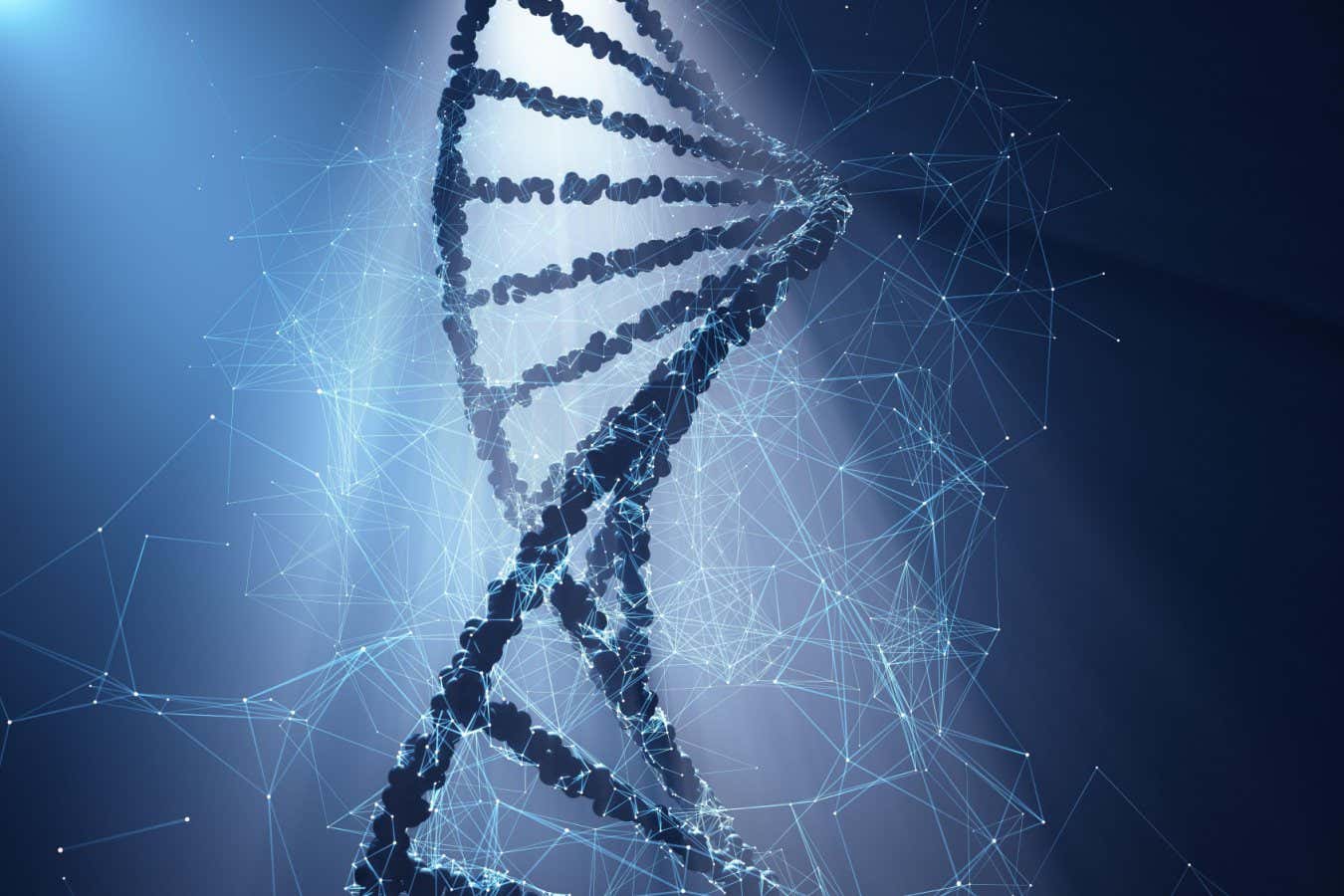

DNA can be used to make nanomachines
Kiyoshi Takahase Segundo/Alamy
Nanoscale “robots” made of DNA that rapidly self-replicate could be harnessed to manufacture drugs or other chemicals inside the body, say researchers.
Feng Zhou at New York University and his colleagues created the tiny machines, which are just 100 nanometres across, using four strands of DNA. The nanorobots are held in a solution with these DNA-strand raw materials, which they arrange into copies of themselves one at a time by using their own structure as a scaffold. The team didn’t respond to a request for comment, but say in their paper that their nanobots are capable of exponential reproduction.
Andrew Surman at King’s College London, who wasn’t involved in the research, says that the nanobots are a step forward in creating machines from DNA that could manufacture drugs or chemicals, or even act as rudimentary robots or computers. Previous work has been limited to 2D shapes, which then have to be folded into 3D shapes – a process which comes with the chance of error. The new work allows 3D structures to be built from scratch.
“Assembling these kinds of things is tricky,” says Surman. “And how things are folded up, both in synthetic things that we make and in biomolecules, is really important. When things are folded wrong they don’t work.”
Richard Handy at the University of Plymouth, UK, says the DNA structures are basically a mould or a scaffold on which another nanostructure can be built – in this case a replica of the original. But that structure could also be designed to create drugs or other chemicals.
“It would be a way of adding an enzyme or a protein to a cell without the DNA in the cell needing to make it,” says Handy. “You have people that have got genetic deficiencies where they’re not able to make an enzyme, so this might be a therapy that would construct the enzyme in the tissue for them. If you’ve got a load of people with type 2 diabetes and insulin secretion problems, maybe you can get one of these DNA scaffolds to make insulin.”
But Surman points out that there are limitations to the self-replication; specific DNA chains are required as raw material for the process to work, as well as certain organic molecules, gold nanorods and precise cycles of heating, cooling and exposure to UV light. The UV light permanently welds the new nanobots together, and the heating tends to separate the new structure and the parent structure so that each can begin to build another copy. Because of this the reaction will not work outside of carefully controlled laboratory conditions, ruling out apocalyptic scenarios where the process runs away and destroys all available DNA by building versions of itself with it.
“This isn’t something that’s taking over the world just yet,” says Surman. “And that’s not a bad thing.”
The idea of self-replicating machines running out of control and turning all matter, including us, into copies of themselves with exponential haste – known as the grey goo scenario – has been a trope in science fiction since the scenario was dreamed up almost 40 years ago in a book by engineer Kim Eric Drexler.
Handy agrees that this process is unlikely to run away uncontrolled, but says that it is not entirely without risk. “The trouble is we don’t know everything that we perhaps ought to know about protein folding and 3D structures in cells. There could be something that we miss. So there’s always that kind of uncertainty; you think you can build safeguards in, but they’re not necessarily a guarantee that it will be safe,” he says.
Topics: